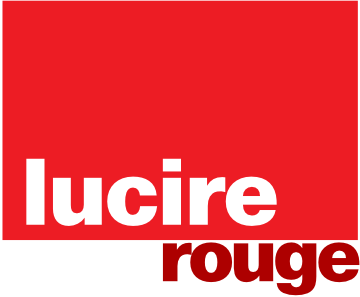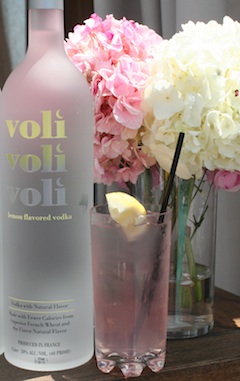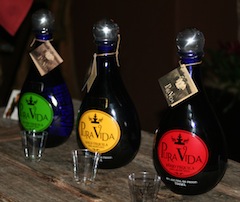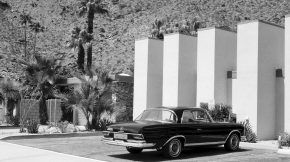The Louisiana Rum Trail: meet the women guiding fans down a (culinary) road less travelled

Although the Bourbon Trail and American Whiskey Trail in Kentucky and Tennessee still captivate history buffs and connoisseurs alike, maverick distillers making up the Louisiana Distillers’ Guild continue to lay the groundwork for the Louisiana Rum Trail (louisianadistilled.org), formed in 2018. Separately and together, they reviving a lost art and bringing a once-hidden chapter in American gastronomic history back into the light. And sweeter still, women distillers, farmers, and women-owned related businesses have a big role in blazing the trail.
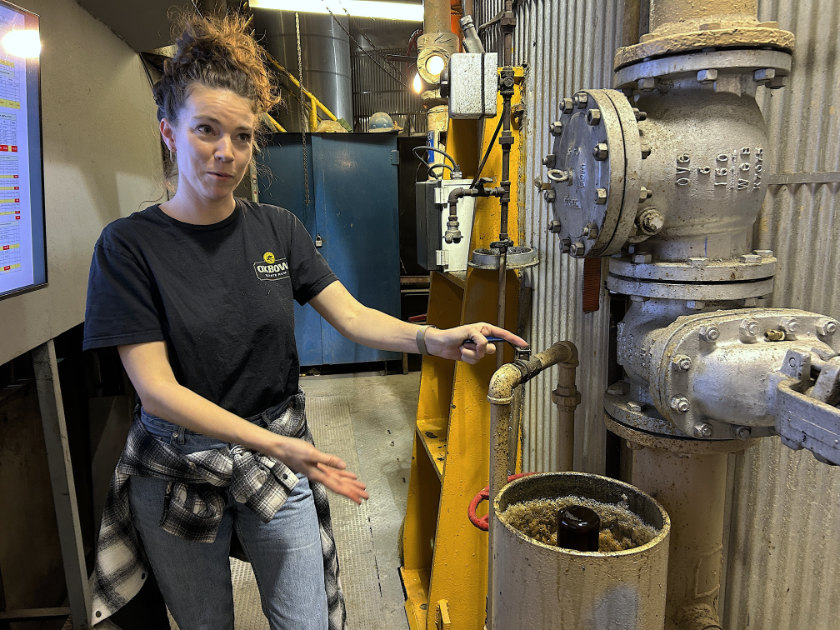
Olivia Stewart demonstrating sugarcane production at her family’s Alma Plantation.
The trail as it exists now extends from New Orleans to Baton Rouge, Lafayette, and several points in between. It also connects a storied past to future potential, thanks to the way the producers are working separately and collectively to ensure rums of the south will rise again to the delight of fans from all walks of life.
Louisiana Rum’s story has its origins in the 17th century when the territory was still under French dominion, and rum was the spirit of choice among the colonists until whiskey took the lead around the time of the American Revolution. The exploration of rum’s evolution in Louisiana also reveals the role Civil Rights played in the revival of this cottage industry, and later, started returning decades after Prohibition.
If your travels take you to New Orleans or Baton Rouge, check out the Louisiana Libations page at Explore Louisiana’s website (libations.explorelouisiana.com/distilleries), which features information about distillery tours and related activities in southern Louisiana. In the meantime, here’s an introduction to a few of the spirited women pouring their heart, soul, business smarts, and creativity into this artisanal endeavour.
Olivia Stewart
Vice-president, Louisiana Distillers’ Guild
President, Oxbow Rum Distillery and Alma Plantation
Since 1859, Olivia Stewart’s family’s estate, Alma Plantation, has raised sugarcane on the banks of an ancient Mississippi River. A sharp bend in the river has made for fertile land and the finest Louisiana sugarcane. Although Stewart’s original career plans took her to New York, everything changed when COVID-19 hit. She decided to move back after living away for 15 years.
It was during this time Stewart learned the rum industry was a lot different than the general liquor industry, and the rum category had historically lacked transparency and regulation. Another thing she realized was that it was surprising that there were not more Louisiana rums on the market. Through her hard work building Oxbow Rum Distillery and in collaboration with other distilleries, they draw attention to the fact that Louisiana is now the number-one sugar-producing state in the US as of last year, having surpassed Florida.
‘Compared to the Caribbean islands and even to Texas and Florida, we have the highest concentration of sugar mills and family-owned farms here in South Louisiana today,’ she says. ‘Therefore, it only makes sense that rum should be made here, right? And it’s happening, as 10 years ago, you could count (rum distilleries) on one hand, and today there are 17. There is (also) a widespread misconception about rum, that it is only meant for tropical beach drinks. It’s up to us to educate the average consumer that rum warrants a spot on the top shelf next to your single malts and allocated bourbons. Rums can be elegant, sipped, and appreciated slowly.
‘When people come to see us at Alma Plantation, I make it a point to explain the connection with our family farm to the slave trade in the West Indies. It’s important for us to take history into account and acknowledge people who worked and lived here against their will. I feel it is an important responsibility to make sure those buried at the cemeteries and their ancestors are honoured for what they did separately and together to make Alma, and by extension, Oxbow, what they are today.’
Adrie de Waal
Head Distiller and General Manager
New Orleans Distillers
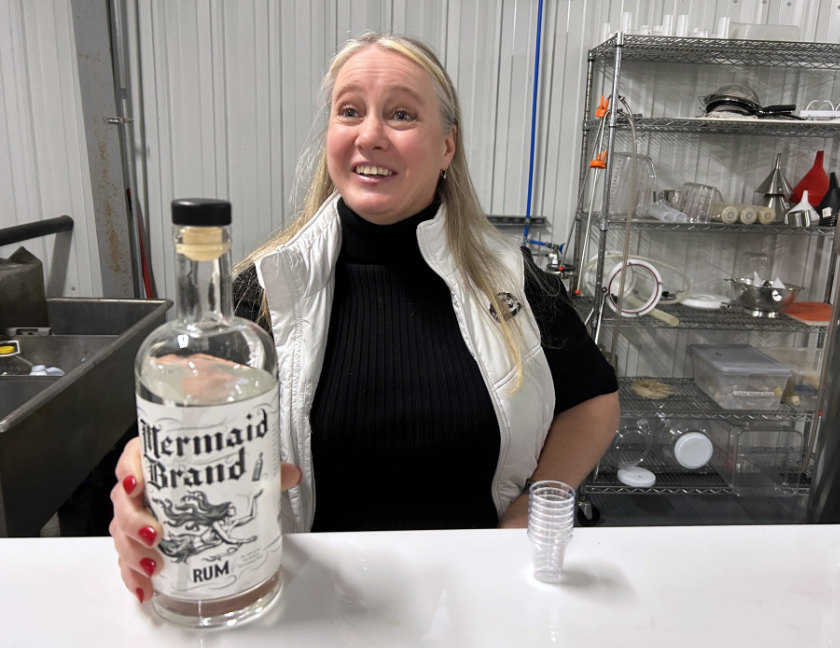
A stone’s throw from New Orleans, along the Mississippi River in Jefferson Parish, New Orleans Distillers was developed over the course of ten years by Adrie de Waal, a young South African scientist who earned her master’s degree in viticulture and enology from Australia at the University of Adelaide. Adrie promoted new process concepts for the production of rum and rum-based liqueurs in the heart of the Louisiana sugar industry. From her ideas, New Orleans Distillers in Harvey, Louisiana took shape.
The company grew over the course of a decade to full production under her leadership as Adrie set strong standards for her process. Quality high-grade molasses, all locally sourced and all copper distillation. Fully artisanal hand bottling, labelling and decorating. Her goal set from the beginning was a “heart of the heart” collection and to strive for quality over quantity.
‘When I’m distilling, I’m constantly tasting,’ she says. ‘If you look at distillation on a timeline, there are heads and tails and the heart in the middle of it, and that’s where we make our cuts, for what is aged goes into the bottle, which means we have more of the heart of the heart, which makes for a smoother, cleaner rum. If it’s not clean and smooth enough for me to drink out of the 145-proof container during the process, we don’t take it further.’
Under her direction, New Orleans Distillers has developed a number of rum products including, but not limited to, White Rum, Gold Rum, various Aged Rums, Spiced Rum, true Navy Rum and 151 Rum. Adrie has used her extensive œnology skills to develop rum-based “port-like” liqueurs. One derived from a honey base and the other from cabernet sauvignon varietal grapes, the result are multiple-year barrel-aged liqueurs that are unique and unmatched in the industry.
Natalie Noel
Co-founder and CEO
Noël Family Distillery
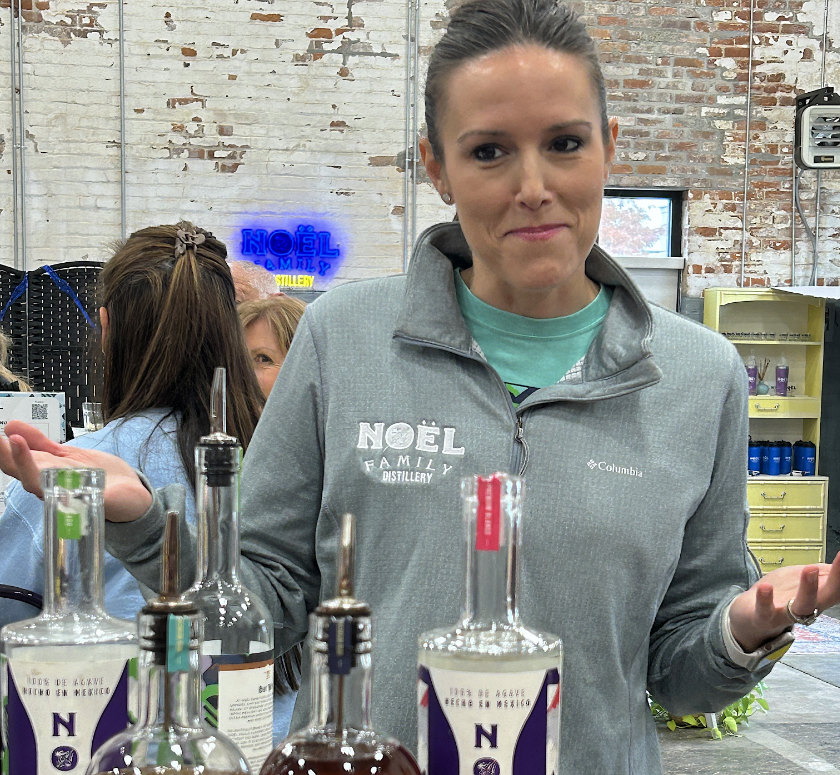
Natalie Noel’s family roots reaches back to the late 1800s in Donaldsonville, La., which is why she and her father chose to establish the distillery here. While the distillery is dedicated to using the harvests from Louisiana sugarcane farms for its rums, the company strives to build the local community while sharing our love of spirits with rum enthusiasts from here and elsewhere.
‘Our commitment to perfection has pushed us beyond sugarcane country, into the world of business, aviation, and now, fine spirits,’ she says. ‘While my dad and I founded the distillery, it’s truly a family business with, my sister, my aunt, and others pulling our weight to get our rums across the state, and eventually, across the US. It’s also worth noting that there’s a growing trend where people at home want to make the kind of interesting cocktails that they find at restaurants. Therefore, we have Kelsey Taylor on our team, who’s fantastic with coming up with creative drinks. We also have a new content series coming out online where we’re interviewing different mixologists, and we’re going to them, and we’re asking them to show us how they interpret our spirits in recipes and different uses.
‘I also think about what’s going on in Louisiana … that a lot of people already know about our food, flavour, fun and our passion for living life’s moments. This provides us an opportunity to share both our spirited outlook and our actual spirits with the world and really combine all of our flavours.’
Angie and Wenceslaus ‘June’ Provost
Provost Farm Heritage Center
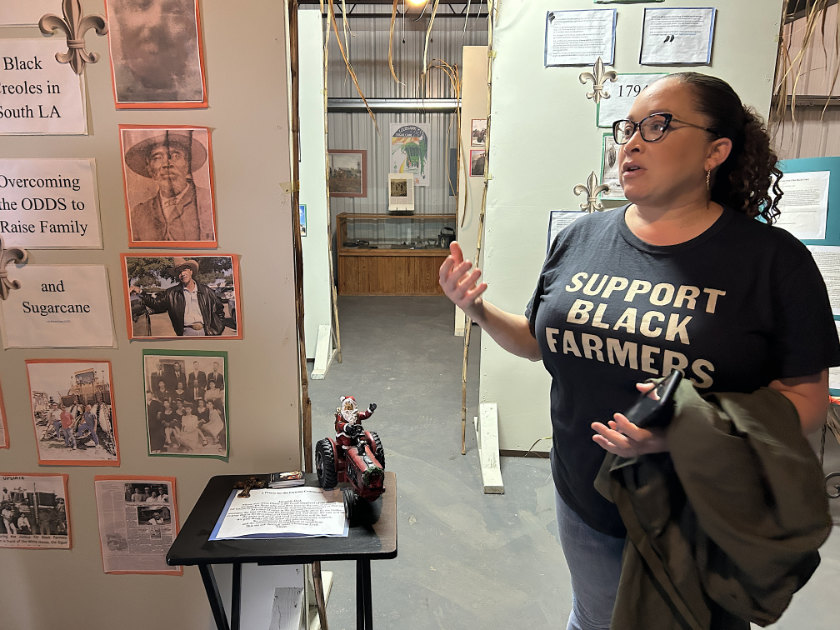
Angie Provost guides a tour through the history of sugarcane in Louisiana.
While Provost Farm is one of the farms providing sugarcane to several of Louisiana’s rum producers, it is simultaneously developing into a historic site dedicated to the dozens of black farming families who made their living on sugarcane farming as well as a handful of sugar-farming families who remain. It is also a festive gathering place for the community.
Giants of the sugarcane industry chronicled in the display include Creole inventor Norbert Rillieux (1806–94), who the Provosts stress that, without him, there would be no widely used rum industry. He ended the Jamaican train system, a very deadly practice on sugarcane plantations, and innovated the steam evaporator system. There are also Mardi Gras costumes representing “Mardi Gras Indians” for Mardi Gras celebrations made up of black and mixed-raced communities (‘Native people and African people sort of melted together even before emancipation. And out of that, you get a beautiful culture,’ says Angie) as well as artefacts used by farmers.
‘While June and I are fourth-generation farm owners, we say we’re multi-generational farmers because we want to acknowledge our ancestors that came over during the transatlantic slave trade and were forced to work these fields, forming the subtropical crop of sugarcane,’ says Angie. ‘Once, there were 60 African–American farming families, not individuals, families, and probably close to 45,000 acres. Today, there are less than 1 per cent of 1 per cent of black sugar cane farmers or farms left. And we’re just giving you a bit of the history of the property. Another one of our goals is that we want to particularly target under-resourced, under-served students who need access to produce sugarcane juice, anything like that to grow their profession. And we’ve been using a lot of the “honeydew list” I share with June. A lot of this hard work, and you’ll see is actually his sweat.’
‘As you can imagine, we’re a story out of centuries of wrongdoing, and we are trying to speak up and speak out and make sure that no matter where you lie, that you understand that we all deserve to be treated as fair and equal human beings,’ says June. ‘And because we’re citizens, we all deserve fair and equal access to programming. And that’s our big mission, and that is what we’re about. With our farm, we’re hoping to get back up to 300 acres. And I know you’re wondering how you can go through 5,000 to 300, but it’s been a whirlwind. We lost our home and foreclosure. Everything you could possibly think of, we went through it.’
Destination micro-distilleries of note near New Orleans
Mark and Megan Taliancich
CEO and Chief Brand Officer
Happy Raptor Distilling (home of 504 Rums)
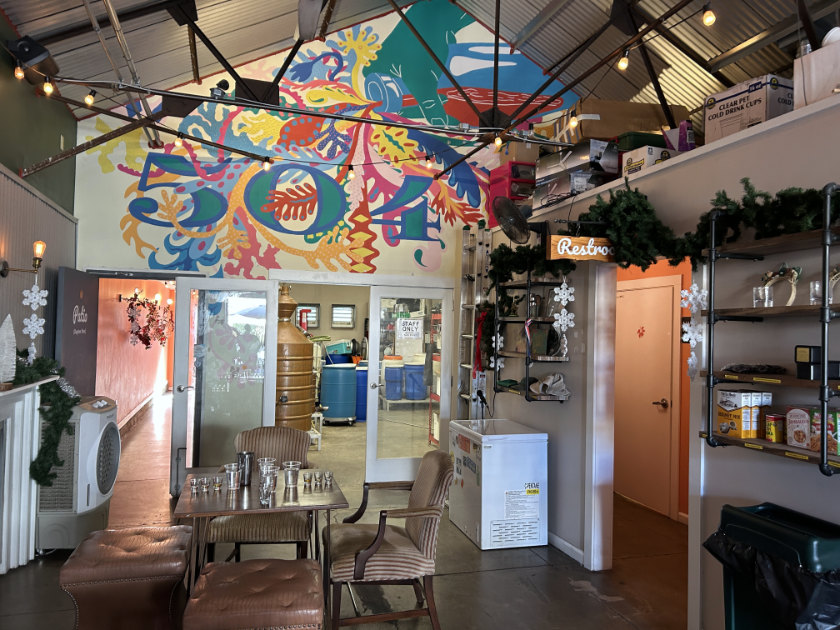
Happy Raptor was founded by three friends and former next-door neighbours: Mark (CEO, head distiller) is a professional mental health counsellor, Megan (chief brand officer) is a public relations’ specialist, and Peter (COO) is a mechanical engineer working with NASA. The distillery specializes in infused rums made in the Caribbean tradition known as a rhum arrangé. Their products, which include 504Hibiscus, 504Gold, 504Silver, and 504Bananas Foster, and 504King Cake, are a light-hearted, unique twist on spiced rum. Each rum is handcrafted with a variety of spices, botanicals and citrus, infused over time in a premium white rum. Whole ingredients such as hibiscus petals, as well as bananas and limes dehydrated by hand, make these products stand out with the familiar and beloved smells and flavours of Louisiana and the Caribbean.
‘We want to be able to represent all of the wonderful people who live and work in New Orleans,’ says Megan Taliancich. ‘A big part of that is working with our local bartenders and restaurants. We want to be able to share our rums with the community and local businesses, but also be able to help each other out, especially in New Orleans at this time where a lot of places are struggling.’
Laurie Fewell
Borasso Spirits
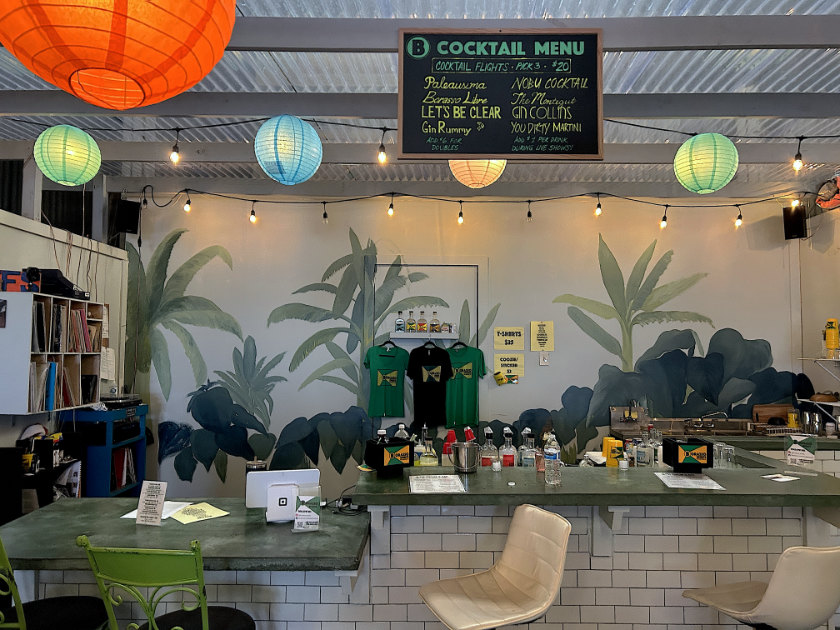
Borasso Spirits was created by Ewan Willey, and he built out the space himself. However, his fiancée, veteran local bartender and artist Laurie Fewell, has a hand all across the operation. Located in a secluded warehouse in New Orleans, it specializes in small-batch, high-quality original spirits that are all developed and made 100 per cent in-house, using almost exclusively local ingredients. Soon after Ewan and Laurie met, they transformed the humble space into a vibrant hangout.
‘I love this town, and I want to do my part in adding something exciting that brings people together,’ says Laurie. ‘Our southeast Asian gin is a point of pride, as it takes its inspiration from New Orleans’ great and large Vietnamese culture. Luckily for us, staples in the Vietnamese diet that luckily all the things that grow naturally in southeast Asia grow in New Orleans because of the hot, humid climate. We have a jazz band that plays on Sunday afternoons, and one musician who lives over in Musician’s Village, and the shiso leaf we use for our Southeast Asian gin (which also contains lime leaf, star anise, lemongrass) comes out of his backyard.’
Judith Allen
Head Distiller
Lula Restaurant Distillery
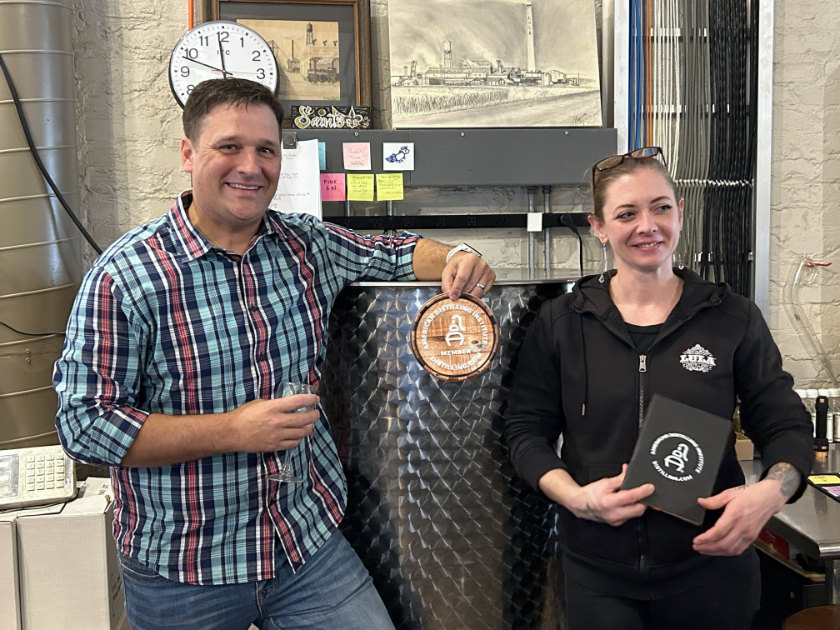
The genesis of Lula Restaurant Distillery, known for its modern twists on regional Louisiana food, can partially be traced to New Zealand, as founders Jess Bourgeois and Bear Caffery met there in 2009. At the time, Jess (who had chef and restaurant experience) was on holiday and Bear was practising emergency medicine in Invercargill. ‘Lucky for us, home distilling is legal in New Zealand,’ said Bear about the ideas were brewing up when Jess mentioned he wanted to open a restaurant. ‘That’s when Jess and I realized that his restaurant experience coupled with my chemistry and distilling knowledge would make a unique business concept.’
Lula Restaurant Distillery, opened in 2017 as the first and only restaurant–distillery in New Orleans, now boasts Judith Allen as its head distiller. Judith, who has been with Lula’s from its opening forward, is responsible for the entire production process, from sourcing raw materials to developing new products, data tracking and analysis, equipment maintenance, and state reporting. She took advantage of the opportunity to connect her mechanics and machinery knowledge with her interests in craft cocktails to learn the ins and outs of running the distillery. From there, she has been key in making critical improvements to Lula’s processes, including fine tuning its cold filtration system and implementing fermentation data tracking. She has worked to expand and improve upon Lula’s product line including developing aged rum and whiskey blends. •

